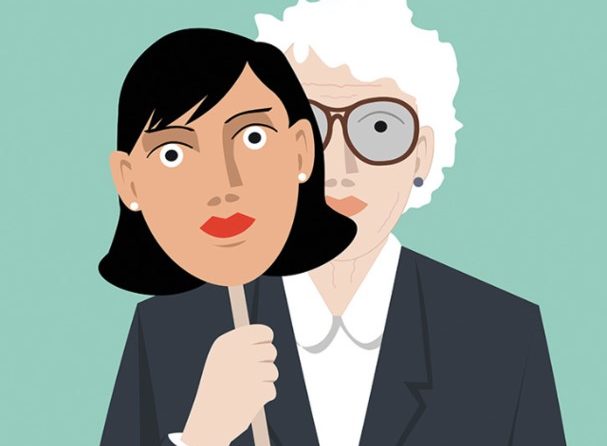
Can People Tell How Old You Are?
New research tracks participants’ eye movements as they guess someone’s age.
Many people consider cosmetic surgery for rejuvenation purposes to be a vain endeavor, pursued by those with superficial ideals of self-worth. While the benefits from face-lift surgery do include perceived increases in physical attractiveness, there are equally significant benefits in perceived age, perceived overall health, and patient self-esteem (Yin et al.).
These improvements are in line with research on the subject of ageism—or prejudice against individuals due to their age—which shows that age-based discrimination and rejection increase the risk for psychological distress, decreased self-esteem, and physical health problems (Pearl et al.). Examples of ageism include workplace discrimination or a variety of “soft” forms of discrimination such as lack of respect or teasing.
As cosmetic surgery becomes less of a taboo undertaking, more and more people are taking a proactive approach to mitigate issues related to ageism by pursuing cosmetic interventions. While it is not possible to “stop the clock” on aging soft tissues, it is possible to effectively decrease an individual’s perceived age with a range of procedures from superficial skin treatments to full “lifting” surgeries (Zimm et al.). In order to be most effective, plastic surgeons like ourselves continue to study what variables in the face are most important when attempting to discern someone’s age.

Source: Shutterstock, used with permission
As we age, there are several key characteristic changes to the face that occur. These include wrinkling of the skin (especially around the eyes and mouth), sagging fat and muscle tissue, drooping eyebrows, and loss of jawline definition. While tissue changes that influence one’s apparent age occur throughout the entire body, a study by Fink et al. showed that facial appearance is singularly the most significant factor in age perception. The inverted triangle model is frequently used to conceptualize how the face shape changes over time. In this model, the typical youthful features include high cheekbones, full cheeks and defined jawline creating the appearance of a downward point triangle. With aging, the triangle eventually inverts becoming wider on the bottom.
A recent study by Liao et al. used an infra-red eye tracking monitor to record the eye movements of participants when asked to guess the age of women in photographs. What they found was that participants gazed significantly longer at the lower third of the face and neck. Of the structures that are found within the central triangle (eyes, nose, mouth) more time was spent looking at the mouth when attempting to determine age. These findings highlight the role of the peri-oral region (i.e., lips and mouth) and the neckline on an individual’s apparent age.
For any cosmetic surgeon, determining a patient’s motivations and expectations from an intervention are paramount to a successful outcome. Ageism is undoubtedly a factor for a significant portion of cosmetic surgery patients seeking anti-aging procedures. While these interventions are certainly not the right choice for every individual, it is important to recognize the effect they may have on combating ageism and boosting self-esteem.
Leave a reply